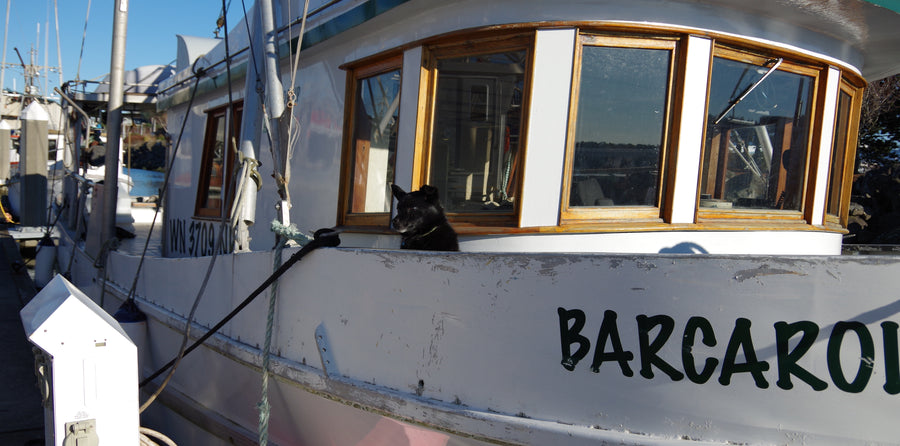
Fisherman Spotlight: Jeremy Brown
The fish on AlaskaGoldBrand.com is caught by the owner/members of Seafood Producers Cooperative. SPC is owned by over 550 members who fish the waters of the North Pacific. Each member is a small boat hook and line fisherman and owner of the cooperative, and therefore receives the benefits of ownership:
* Product reaches a wider market than if fishermen were working on their own
* Democratic control—each member votes on key decisions and investments made by the cooperative
* Use of processing facilities that pack fish for them
When you get your fish from the Alaska Gold Brand website, you get your fish from a fisherman, a member of Seafood Producers Cooperative. With each order you receive we’ll feature a story about a different member.
Jeremy Brown has been an owner/member of Seafood Producers Cooperative since 1988. He’s very much interested in cultivating the producer-chef-eater relationship and he can wax poetic for days on the many nuances of a quality fish. He also believes that we should sell our hand-caught seafood by region and vintage, much like what wineries do.
Jeremy is a perfect example of what Dan Barber writes about in Third Plate: Field Notes on the Future of Food, specifically in terms of elevating the voice of the producer. Barber writes: “Wild fish did not come into this world just to be our food. They came into this world to pursue their own individual destinies. If we hunt them and eat them, we must hunt them with care and eat them with the fullness of our appreciation.” It is with deep appreciation that Jeremy fishes for salmon. He treats them with respect and he knows quality when he catches and tastes what he produces. “You can tell the minute the fish is on the line if it’s going to be special.”
As fishermen, we produce the last commercially available wild food and our fishermen-owner-members harvest this food in a traditional way that respects the ingredient and in turns brings a quality product to diners. As Jeremy Brown says: “Every fish I catch is different. They’re wild animals. They all have a different life history and story. They deserve and demand to be handled and treated all the way to the consumer with that sort of devotion to the quality of the fish.”
Jeremy is originally from Cornwall, England, which you’ll hear in his voice the minute he begins to get excited talking about fish. He has travelled the world fishing, adventuring and eating. Yet with all the traveling he does, Jeremy ‘s favorite place, at least to fish, is off Lituya Bay, site of one of the biggest waves of all time. In 1958, a 1720-foot high wave, the result of an earthquake that registered 8 on the Richter scale, pulled out all of the trees, rocks and debris surrounding Lituya Bay. The place is spooky, possibly haunted, but has also served as a refuge for salmon and halibut fishermen, certainly many of them SPC members, during storms on the Fairweather Grounds. This special place is the seaward portion of Glacier Bay National Park, which is shadowed by the Fairweather Range of the Saint Elias mountains. It is a land rich with whale, otter, salmon, halibut, and the cultural history of the Tlingits of Southeast Alaska.
Jeremy partners with others to longline in Southeast Alaska, but has been fishing on his own on the Barcarole for 10 years, primarily off the coast of Washington near Neah Bay and LaPush. He likes working on his own because that way he can control the process. He likes being able to perform his own quality control, respecting each fish so that it is produced for the customer in the most perfect way it can be presented.
Jeremy winters in Bellingham, Washington, where his wife is an acupuncturist and he personally delivers his fish to numerous chefs in the area, such as Blaine Wetzel at The Willows on Lummi Island, one of the world’s premier restaurants.
His favorite dishes are Kazu black cod and gravlax. “It has to be with our Alaska Gold Brand™ coho salmon fillets. Coho’s perfect for gravlax and our coho’s the best out there.”



